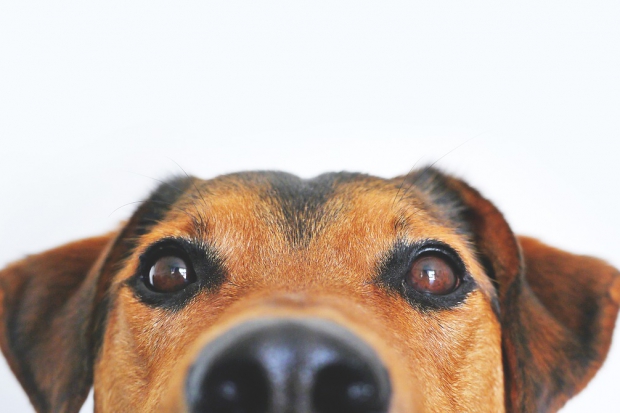We welcome John Woods as a guest blogger to SabbaticalHomes.com.
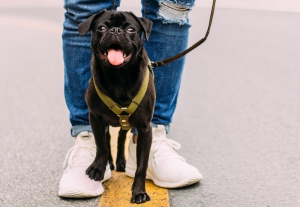 John is a member of the Association of Professional Dog Trainers, a graduate in Animal Behavior and Welfare and is a recognized author by the Dog Writers Association of America. He brings years of expertise in professional dog training as well as the personal experience of traveling with pets to those who may be considering taking a pet while on sabbatical leave.
John is a member of the Association of Professional Dog Trainers, a graduate in Animal Behavior and Welfare and is a recognized author by the Dog Writers Association of America. He brings years of expertise in professional dog training as well as the personal experience of traveling with pets to those who may be considering taking a pet while on sabbatical leave.
Taking a Sabbatical?
As careers progress, many of us consider potential changes and new opportunities. Sometimes, a new job or simply moving to a new company just doesn’t quite cut it. We’ve all heard of that person who took a sabbatical – whether it was 6 months or a year – and returned refreshed and inspired. Read more here about the benefits you’ll experience when taking a sabbatical.

We dream of how incredible the experience would be and then dampen the idea by thinking about the realities. The house, the dog? What happens with all of them? Well, even with a dog in tow, it’s more than possible to plan and take sabbatical leave.
When you are searching for a possible sabbatical home on SabbaticalHomes.com, make sure to search for pet-friendly accommodations. Our members are very detailed about creating listings for their homes, and a good match will make your sabbatical more enjoyable.
Once you’ve negotiated the details of your sabbatical and finalized the terms of your temporary home, it’s the time to get down to planning the rest. We’ve put together some handy tips to make taking your pet with you on sabbatical as stress-free as possible.
Moving to a New Environment
To give you the best chance of helping your dog settle in a new environment, we will quickly re-visit the idea behind dog socialization.
When you are raising a puppy, you introduce him to the world. You praise and reward him when he responds positively to experiences, for example, with a calm response or by simply showing interest or indifference and then walking away.
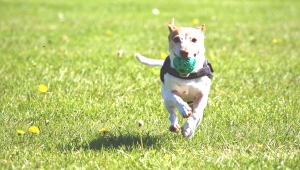
You repeat these experiences, so he learns that the bins on the corner of the street aren’t going to jump out at him and he simply walks past them. Like humans, the more we repeat an action, the easier or more habitual it becomes.
We need to use this idea when moving to a new environment. Here’s an ideal case where you are moving into a new home, maybe in the same city or close enough to visit multiple times before you move:
• Take your dog with you when you are visiting your new home.
• Reward him as he goes through the door, let him explore, play a game in the yard and practice some commands in the yard.
• Don’t organize for any work to be carried out at the same time, you want him to be stress-free and calm, not barking at unfamiliar workmen.
• If possible, leave and return a number of times before the moving date.
However, moving to a temporary home for a sabbatical is a different situation, especially if you’re taking a sabbatical in another city or another country, as many people do.
• If you are unable to acclimatize your dog without any initial visits, don’t panic, just be more patient when you do move.
• Just as you will be keen to explore the house and the area, so will he. Let him sniff around and find a spot to curl up and take a nap in. Most of all, be patient. Reward and praise as you are going through the door as above, play and just take some time out of what may be a chaotic day of travel and getting settled.
Planning Ahead
Visit your veterinarian to make sure your dog is up to date on all his shots, paying special attention to the duration of his rabies shot. Ask your vet if you have any concerns about your dog traveling and make sure to have any regular medications filled.
If you’ll be flying to your destination, make sure to reserve plane tickets for a flight that is specifically designated for pets. If your dog will be in the cabin with you, ensure he is in an airline-compliant carrier. If the airline requires that your dog travel in cargo, start crate training earlier rather than later and confirm that the type of crate you are using is approved by the airline for travel.
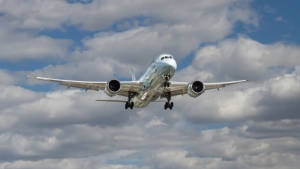
Research any requirements your destination country may have for animals. There are now pet visas that have all the pet’s information handy and can expedite the process once you arrive. Some countries have required quarantines, so make sure you know what to expect.
Even if you are able to drive to your destination, it’s not a bad idea to consider crate training to have the option while staying in someone else’s home. We would all feel terrible having a pet ruin something as a guest in someone’s house. It’s also awful to consider the anxiety the dog is experiencing to act out. If done slowly and kindly, most dogs feel safe in their crate.
Crate Training
Firstly, if your dog has never been crate trained, it can a month or so to accomplish. Start with building the crate in an area of your home where you and your family relax. Place some bedding inside that smells familiar to your dog. Let Fido sniff it and explore. Intermittently, throw treats inside, but don’t close the door.
Occasionally, give Fido a chew or a food puzzle in the crate, again, keep the door open. He can choose to come and go as he pleases. You may want to start feeding Fido in the crate, again making a positive association. Once Fido is happy spending time in the crate, close the door for the duration of the chew, puzzle or food.
Only when you are confident Fido is happy and settled in his crate, you can start leaving him unsupervised for an hour or so at a time, slowly extending the amount of time he spends in his crate. Make sure you keep your normal routine of exercising your dog so he gets plenty of stimulation.
The bonus with being crate trained is it’s transferable – no matter where you or Fido go, he knows that it’s his safe place, it’s his den. If you intend to move several times during the sabbatical, it could be your saving grace!
The Travel Day
Travel By Car
The day has arrived, you’re packing up the car and ready for your new adventure on your sabbatical. When taking Fido in the car, ensure he has plenty of space. He should easily be able to stand up, sit and lay down. He shouldn’t have any issues moving around.

Remember to pack the basics. Take water for the journey and his food if it’ll span over mealtimes. Plan your route and figure out where it is best to stop for toilet breaks, ideally quieter truck stops with an open space you can take Fido on his lead to do his business. Remember your poo bags!
Ideally, you would have already tackled the traveling part by practicing short journeys in the car. When in the car, keep a listen out for any whining/crying, or if you have passengers ask them to keep an eye on his behavior. If he is getting stressed; licking his lips, yawning, panting or circling, etc. plan a stop soon. A walk in the fresh air works wonders for humans and dogs alike! There are also songs that are specifically created to help reduce stress in dogs; it could be worth having this as your traveling soundtrack for those extra stressed dogs!
Travel By Airplane
If you are traveling by plane, make sure to follow the airline and your veterinarian’s advice to prepare your dog. After the flight, your dog will be very happy to see you! Be sure to get him outside for a bathroom break, and allow extra time to pet and comfort him in.
The Adjustment
When moving homes within a city, some owners choose to put their dog in daycare or in the care of a friend or relative on the day of the move. You won’t necessarily have that option in an entirely new city or country, so you’re going to have to give Fido some time to adjust to the new home.
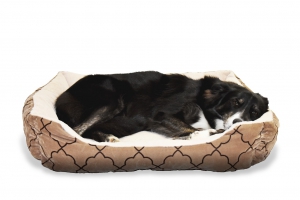 When you arrive at your sabbatical home, take a few steps to help your pet feel secure:
When you arrive at your sabbatical home, take a few steps to help your pet feel secure:
• Set his bed up immediately and a safe area for him to retreat
• If he is crate trained, even better. Set up the crate in an area similar to where you have it at home. He’ll know that no matter what, he has his safe place if he starts to get overwhelmed or unsettled.
• Give him a chew or food puzzle to keep him occupied if he’s getting a little stressed. You’ll notice this by excess pacing, yawning, circling, pining or whining.
The new house will be full of new smells; especially if the previous occupants had pets. Fido may seem to be more active than usual – this is to be expected. The change in the environment will create a stress response in his body.
Just like humans, when dogs are stressed, their body releases certain hormones. Cortisol is released to help the body respond to the perceived threat, so it directs blood flow to muscles for example. Adrenaline is also released which raises the heart rate and blood pressure. These hormones help Fido in fight-flight-freeze situations, but not so much in a prolonged situation.
Watch for signs that Fido isn’t coping well with the change. You may notice more active behavior, almost hyper-aroused. He may become withdrawn and hide. You may also notice other physical symptoms like diarrhea (adrenaline reduces blood flow to the intestine which causes diarrhea), mange (cortisol affects the immune system which makes them more susceptible to infections like mange), or issues with urination or defecation (excess or withholding). If you are concerned about his health, seek veterinarian attention.
Consider using plug-in pheromone diffusers to help settle Fido or jackets or body wraps to help reduce his stress levels.
Try to keep his routine as similar as possible – go for walks and feed him as usual. Be patient and expect some teething problems. Pun intended.
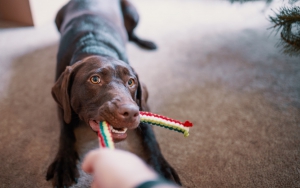
When dogs are stressed or anxious, they can become destructive; not ideal if you’re renting temporary accommodation or need to leave Fido for short periods whilst you deal with sabbatical related business.
Again, in keeping destruction to a minimum, you need to keep Fido’s stress levels low and encourage acceptable behavior:
• Provide safe chew toys for Fido to get stuck into
• Consider swapping his meals into a slow feeder toy
• Use brain games to keep him occupied in your absence. A great example is cutting a kitchen towel into three lengths. Plait them together and tie at the end. Put treats into the plait so he has to figure out how to get them. The longer and tighter the plait, the harder the treats are to get and the busier Fido will be!
If Fido is crate trained, this is the safest place for him to be whilst you can’t supervise him. He knows it’s his safe place and you can be confident that he won’t hurt himself (or the house) in your absence.
Enjoy!
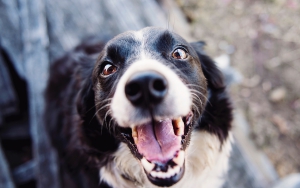 Many dogs will tolerate moving to a new home or environment with no issues; they will be excited about the adventure. But you never know until you get there. Be patient and expect teething problems, especially for younger dogs. Involve Fido in the move as much as possible, let him make positive associations and understand it’s nothing to be fearful of. Keep his routine the same where you can but most of all, stay calm and enjoy it. Fido will most likely follow your lead.
Many dogs will tolerate moving to a new home or environment with no issues; they will be excited about the adventure. But you never know until you get there. Be patient and expect teething problems, especially for younger dogs. Involve Fido in the move as much as possible, let him make positive associations and understand it’s nothing to be fearful of. Keep his routine the same where you can but most of all, stay calm and enjoy it. Fido will most likely follow your lead.
Related: Home Exchange Tips from TransitionsAbroad.com
Let us know what you think! Connect with us on Twitter, LinkedIn, Facebook, Instagram, YouTube and Pinterest.


